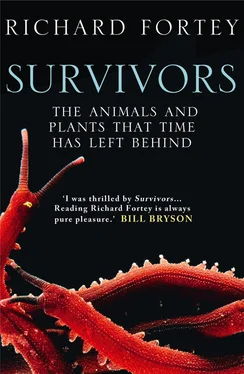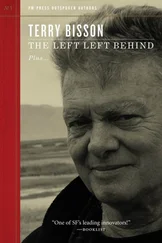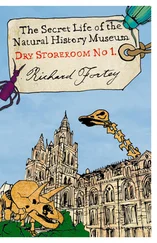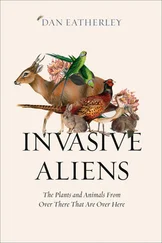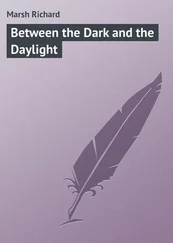1 ...6 7 8 10 11 12 ...21 
The Search for the Velvet Worm

New Zealand is a country that beguiles but deceives, for much of it is dressed in false colours. Although there is still some almost untouched forest on the South Island, human hands have transformed much of New Zealand in the service of forestry and sheep.
The story of these islands is one of isolation. Their origins lie within the great and ancient vanished land of Gondwana, from a time when peninsular India, South America, Africa and Australia were united together as a ‘supercontinent’. Something like 100 million years ago the nascent New Zealand separated from its parent, as Gondwana began to fragment progressively into its individual plates. These eventually forged the continents of the southern hemisphere that we would recognise today. Unravelling this story was one of the great achievements of modern science, and it is linked to some of the stories of biological survivors in this book. New Zealand may be just a small part of that story, but its own narrative is geologically complex. To a kernel of old Gondwana rocks, newer rocks have been added piece by piece because the islands have sat in a tectonically active, though isolated zone for millions of years. Volcanoes have made their fiery contribution in ash and lava, other igneous rocks have been intruded into the Alpine range as it grew, and then sediments eroded from the young mountains completed a dynamic rock record. It could be said that the geography of New Zealand has been under constant revision. But animals and plants were also carried onwards into the growing New Zealand from the ancient Gondwana days, a persistent legacy of an old continent bequeathed to a future land. Sometimes the evolutionary signal of an organism betrays a far-distant past in surprising ways.
The ancient coniferous podocarp forests that once covered much of the North Island have all but disappeared. Little patches of it hang on almost by oversight. They are dark and mysterious within; silent, but for melodic tweets from birds high up in the canopy feeding on the little fruits the trees produce. Podocarps are southern hemisphere conifers of several species that make superb and stately trees if they are allowed centuries to grow to maturity. This is too long for a healthy profit. The original forests were felled for their good timber, but were replaced in many areas by quick-growing conifers such as Californian pines deriving from the other hemisphere. Huge areas of the North Island are covered with conifer plantations. Periodically they are felled en masse and then the rolling hills are scenes of devastation, with nothing green left standing but wrecks of stumps and unwanted branches in rough piles everywhere, and small fires smouldering as if shells had exploded not long before. When I drove through such an area I was torn between recollections of battle scenes from World War One, and J. R. R. Tolkien’s descriptions of the ghastly land of Mordor in The Lord of the Rings. I suppose the latter might be more appropriate, since splendid alpine New Zealand has been repeatedly used as the location for the movie version of Tolkien’s saga. The sheep country looks like steep sheep country everywhere, and reminded me of Wales and Scotland, even to the extent of carrying scrubby patches of brilliant yellow-flowered gorse – which, of course, is a troublesome introduction from Europe. There are so many other Europeans on these islands, not just Smiths and Joneses in suburban villas, but oaks, sycamores, elderberries, and implacable ivy. They compete for space with other native trees, including the New Zealand red beech, Nothofagus fusca, with its delightfully delicate little leaves and graceful habit. I could not help feeling that a coarse and unthinking hand has been at work, interfering with the landscape, scrubbing forests out, planting weeds. This is grossly unfair to the New Zealanders, the kindest people on earth.
Podocarp trees are in a sense ‘survivors’ from the time of Gondwana. These trees are found in Australia, New Caledonia, South America, and Sub-Saharan Africa – one or two genera are even in common between New Zealand and the Andes. Gondwana may have split into its separate pieces, but the identity tags of its former inhabitants were not redesigned so easily. These Gondwanan coniferous trees, with their relatively large leaves and bright berries, do have a very special appearance, at least to a European accustomed to pines and firs with their dry-looking cones. A botanist would remind me I should really describe the berries as ‘fleshy peduncles’ because they carry exposed seeds at their tips. On the wet west coast of the South Island near Karamea, I walk into a podocarp forest where dampness rules. Everything that could be is covered in moss, epiphytes or filmy ferns. They clothe the trunks and branches of trees in a creeping, delicate and close-fitting cloak of tiny green leaves. Inconspicuous orchids are there somewhere, perched on branches, sporting small yellowish flowers, the antithesis of tropical showiness. Where light breaks through the canopy, tree ferns erupt like green fountains perched on shaggy stems, adding ebullience to the primeval atmosphere. Little brown birds with bright little eyes – tom-tits New Zealanders call them – pipe tamely from exposed twigs hoping that these clodhopping visitors might disturb insects for their supper. Trunks of the podocarp totara tree soar upwards, while the rimu – the most elegant of its family, with weeping, cypress-like branches – breaks through the canopy like drapes. The wood of this tree is so hard that the heart is still sound for working from trunks lying on the ground years after the outer layers have rotted. The more familiar southern beeches (Nothofagus) are unsuitable for major construction since they rot from the inside out, but they also have a Gondwanan signature, following closely the pattern of the podocarps. I recall that Charles Darwin observed how the natives in Tierra del Fuego ate a curious fungus looking like a cluster of yellow golf balls that grew on southern beech branches. The fungus was named Cyttaria darwinii by Miles Joseph Berkeley, the great nineteenth-century mycologist who worked out the fungal cause of the Irish potato blight. Further species of the same fungus were discovered, but they only grew on southern beeches: fungi can be choosy. The Gondwana legacy even applies to soft, edible fungi that would never stand a chance of being preserved as fossils. Biologists must have their wits about them if they are to understand the complexity of the past.
New Zealand took away its package of Gondwanan plants as the continent broke up. Later, it was colonised by birds, and they evolved in isolation to produce a host of endemic species. Some are almost comical, like the kakapo, a ground parrot of remarkable stupidity (and now a threatened species), and the kea, a mountain parrot of legendary intelligence and a fondness for eating the windscreen wipers of cars exploring the Alps. It is said that keas can be found solving crossword puzzles left behind by tourists. Other birds became intimately involved with perpetuating the podocarp forest by swallowing and distributing their seeds. Some still remain, singing sweet songs high in the canopies of the stately stands that survive. Many scientists believe that at some stage in New Zealand history the sea level rose to a point where mammal species could not endure and breed. Today, it has no endemic terrestrial mammals. Whatever happened, nobody could question the fact that this antipodean island represents the acme of avian evolution in the absence of serious mammalian competitors. The loss of the ability to fly is common – why bother to take to the air when you can safely amble about in the bush? The kiwi is the amiable emblem of the country; a variety of kiwi species show the fecundity of this ground-dwelling option. None is safe for the future. The largest flightless bird that ever lived, the moa, lived in huge numbers in New Zealand. A Brobdingnagian ostrich, it was meat on legs for the first human invaders, who undoubtedly hastened its extinction. *In the Karamea forest I see the dark entrance to cave systems perforating Honeycomb Hill from which dozens of moa bones have been recovered, and marvel at a sudden vision of an island swarming with the giant birds. If only we could turn back the clock. So many New Zealand bird species are either extinct or threatened. The new generation of New Zealanders are almost neurotically aware of what human interference has done to the natural environment. The introduction of the possum from Australia was a particular disaster, since these aggressive vegetarians seem to particularly relish New Zealand tree flowers. They threaten the livelihoods of all the nectar sippers and honey eaters among the bird species. The restocking of offshore islands with native birds in a rat-free, possum-free and cat-free environment seems to be the best option at the moment. It is at best a despairing attempt to store away from further trouble a remarkable history running into millions of years.
Читать дальше
